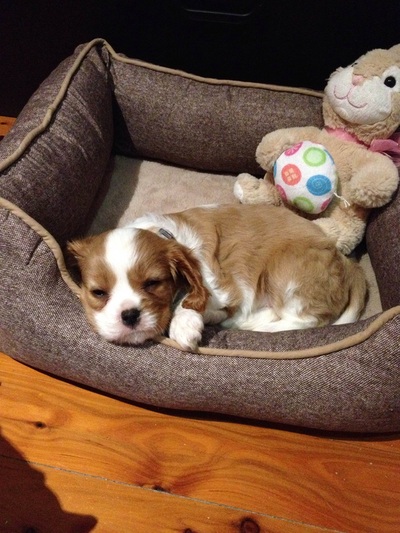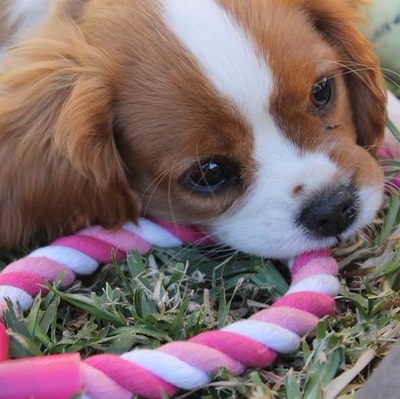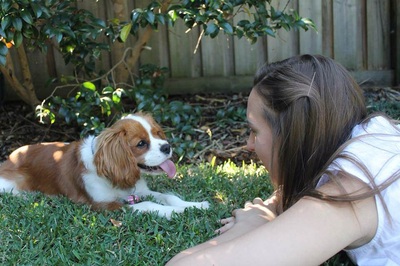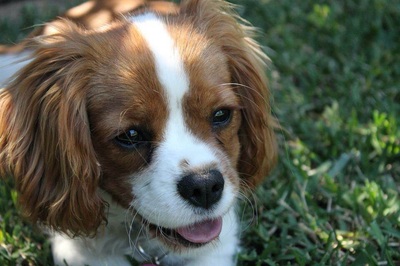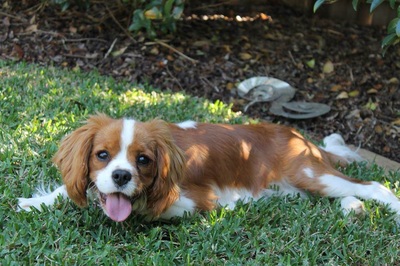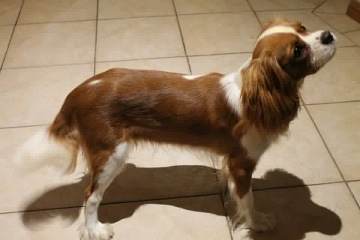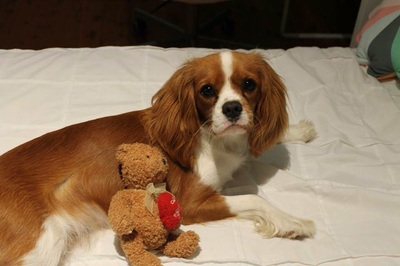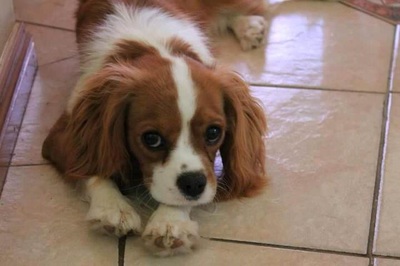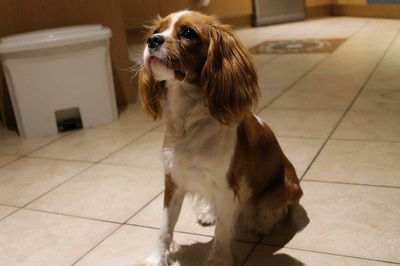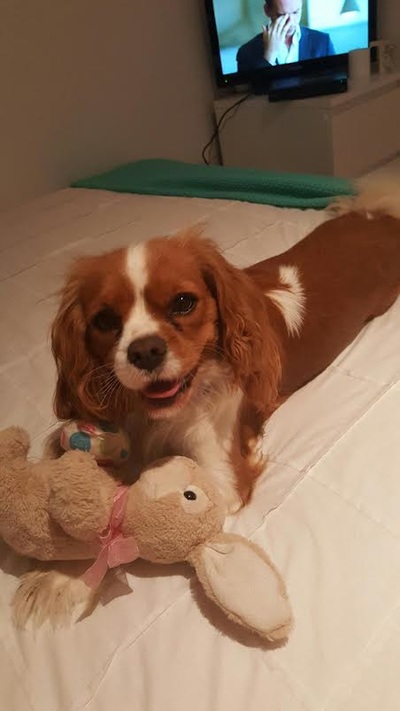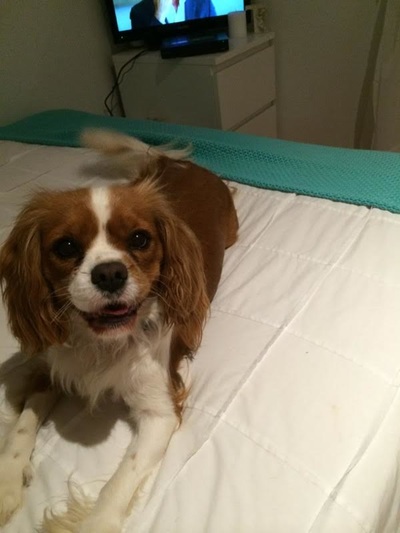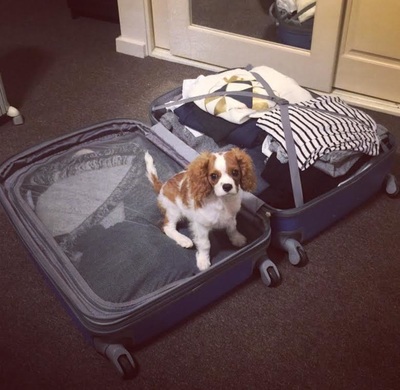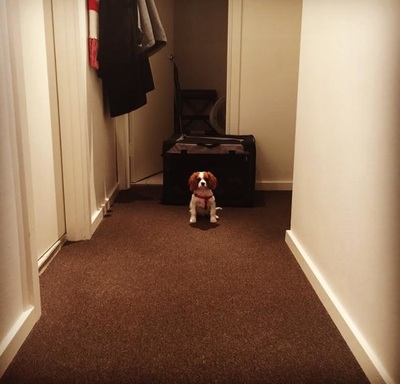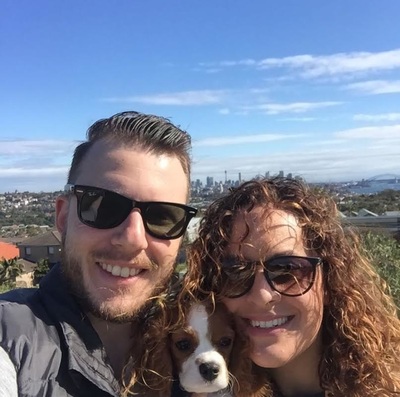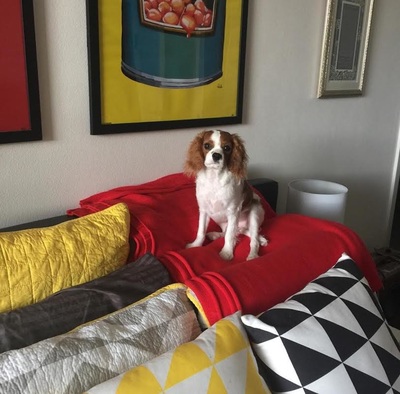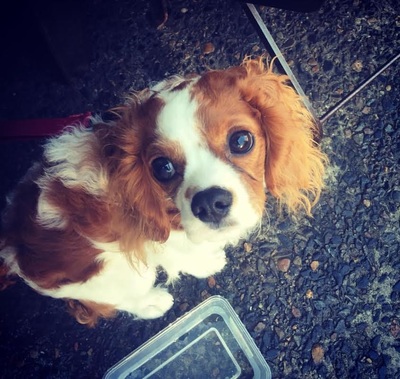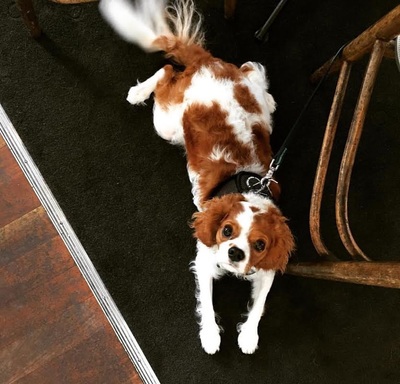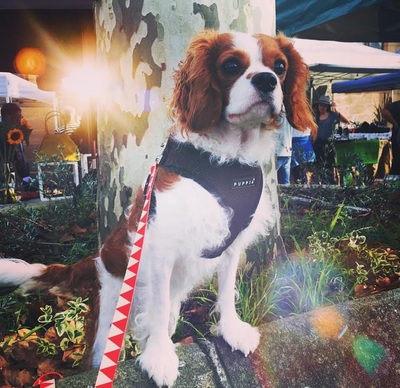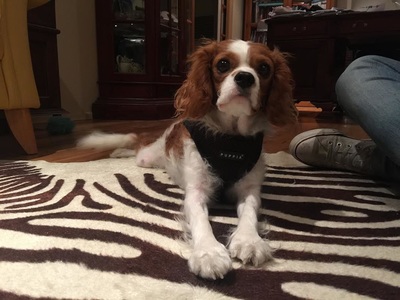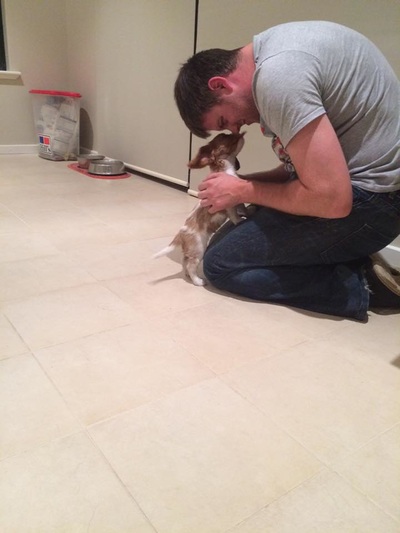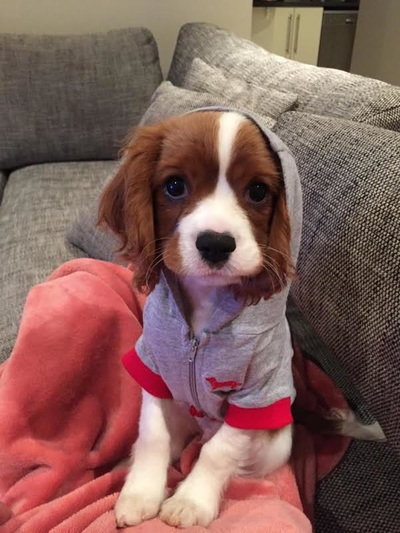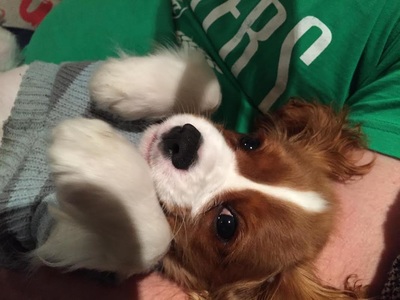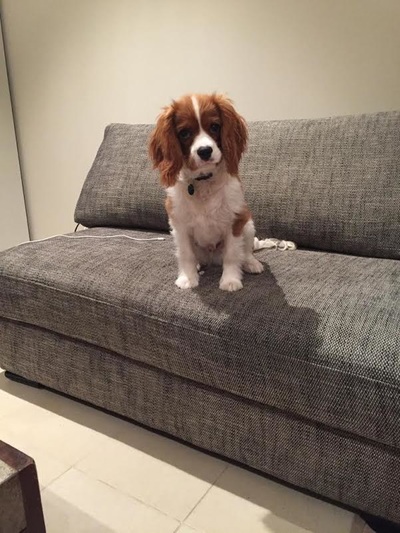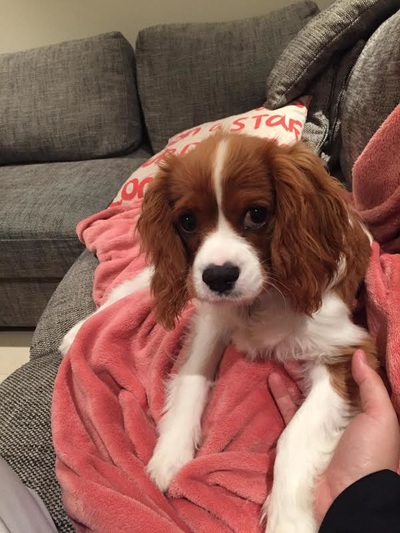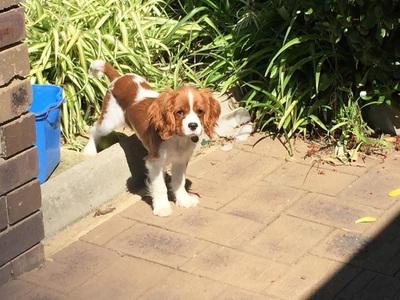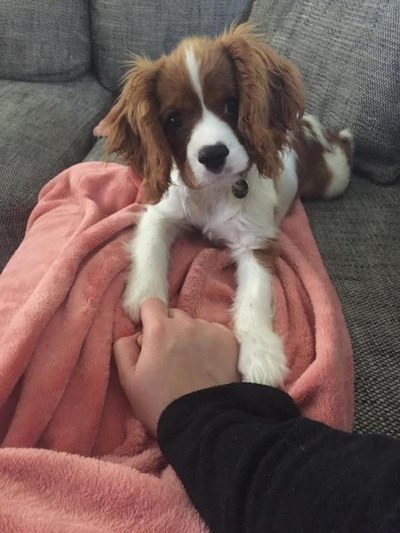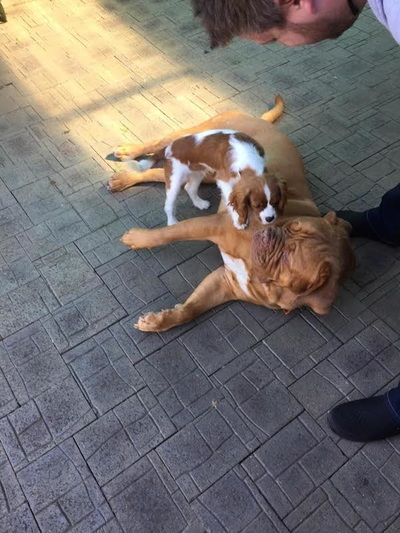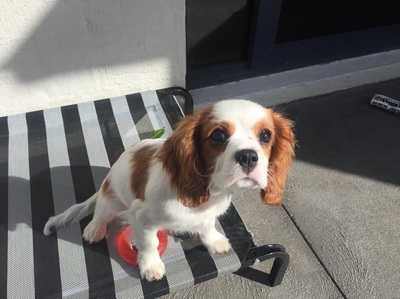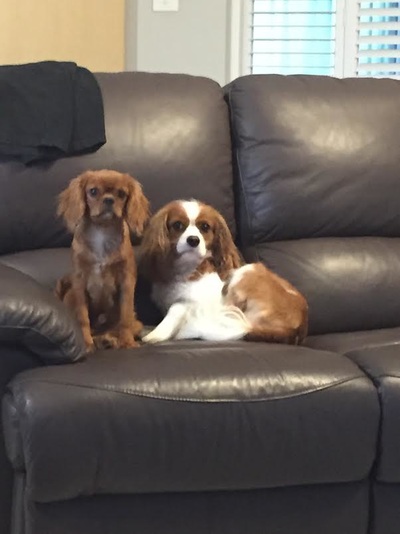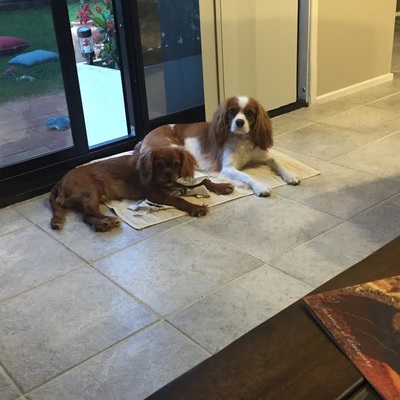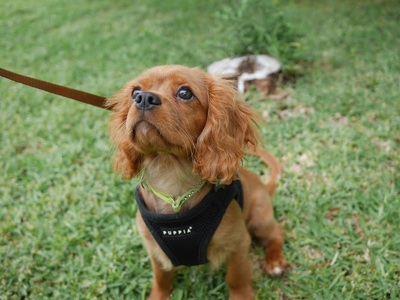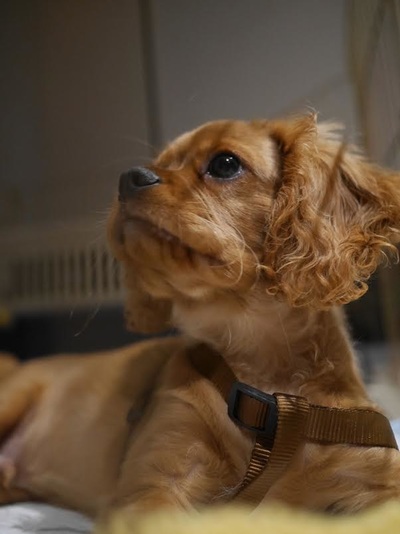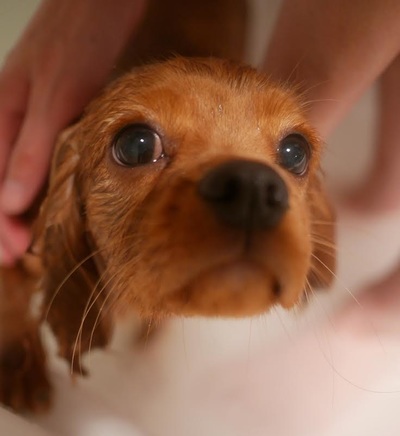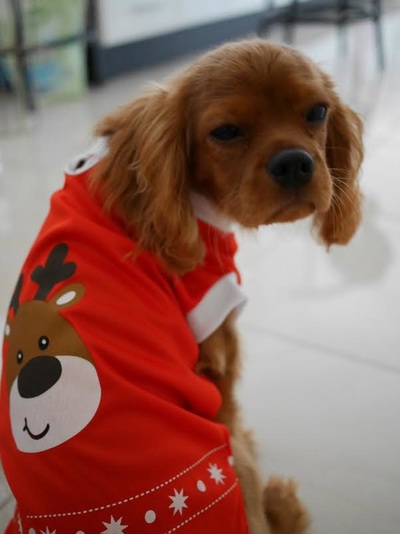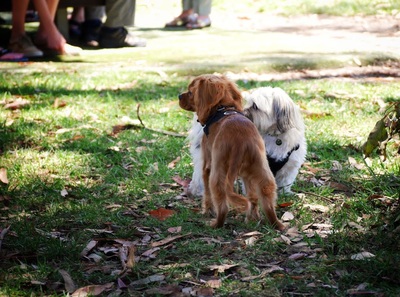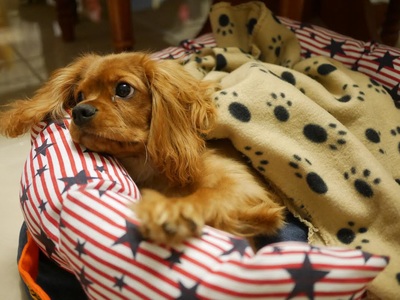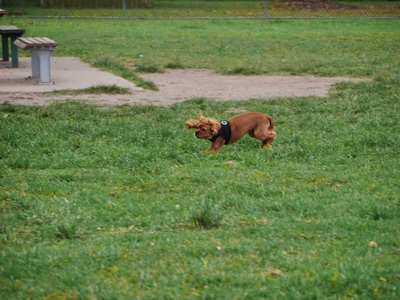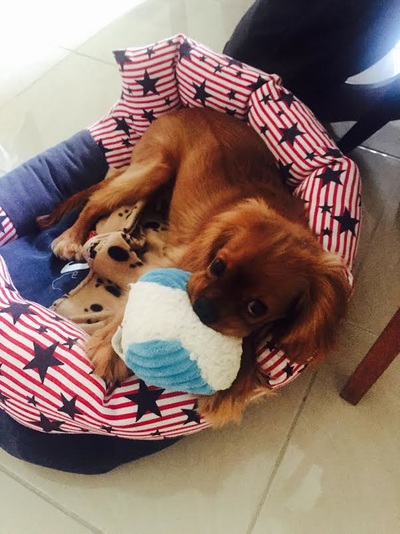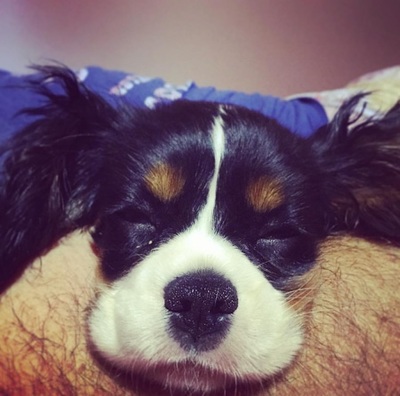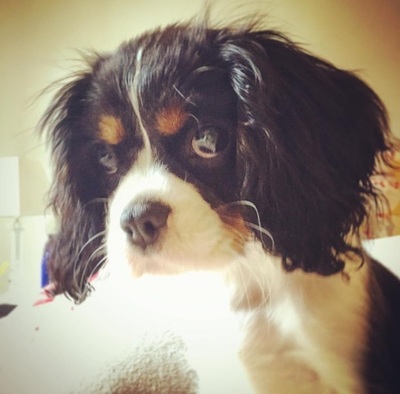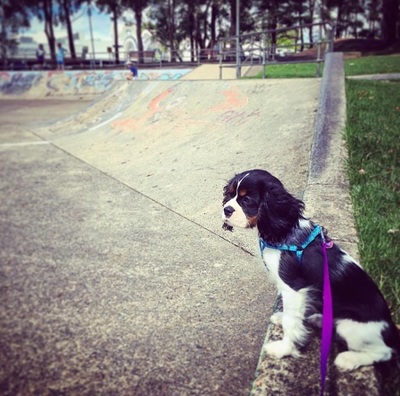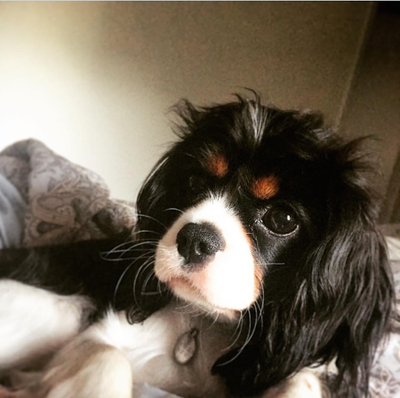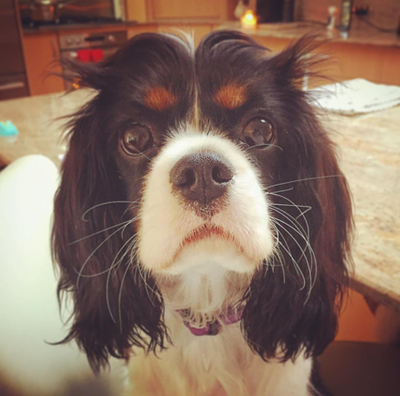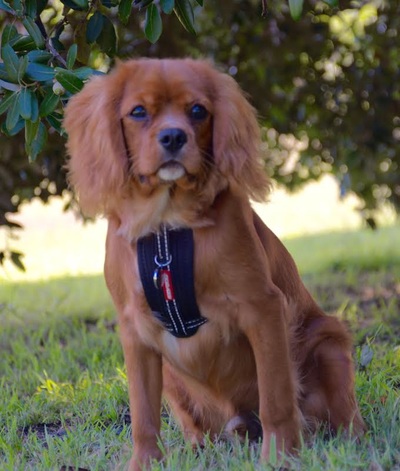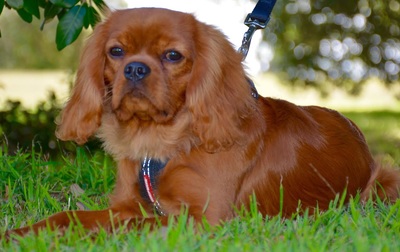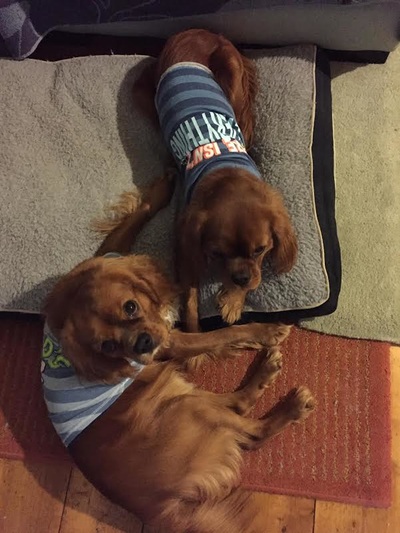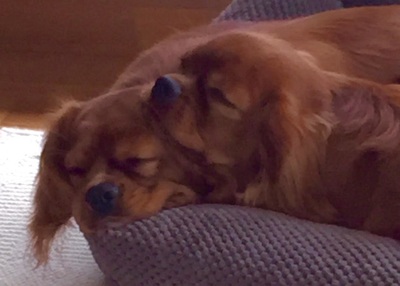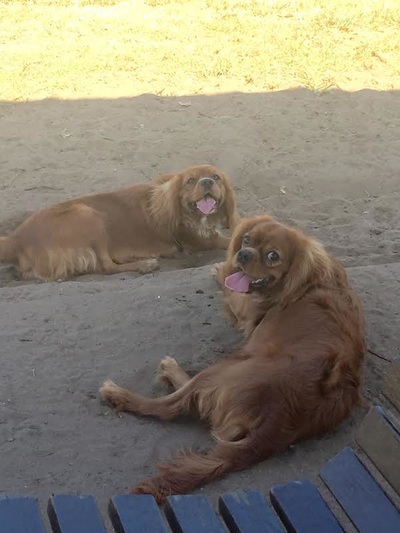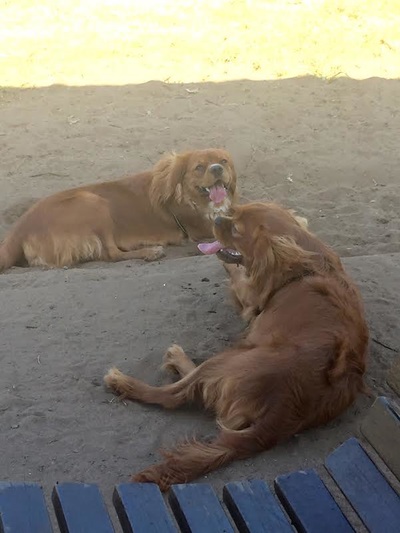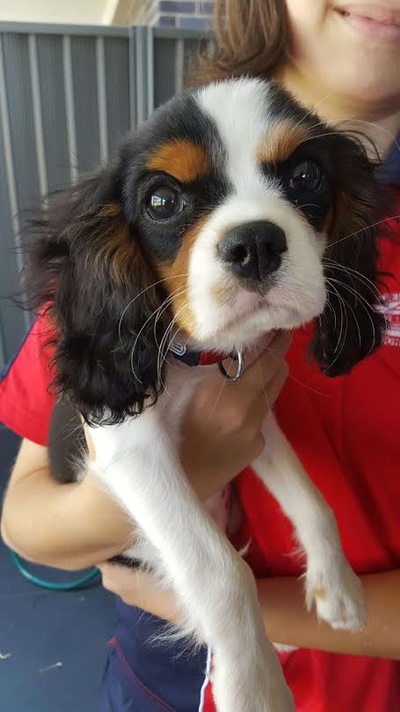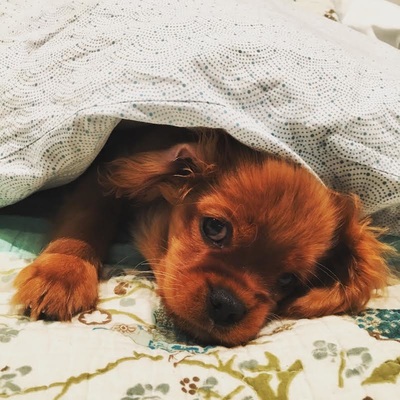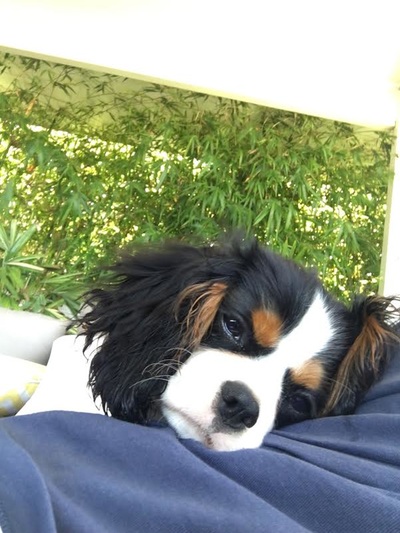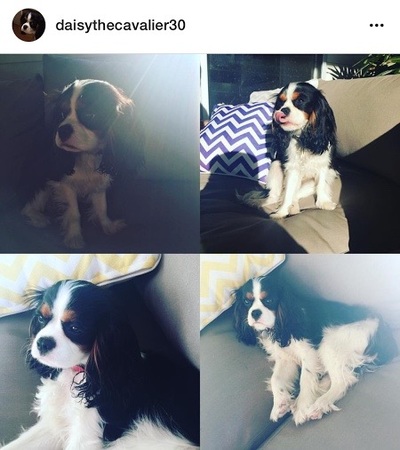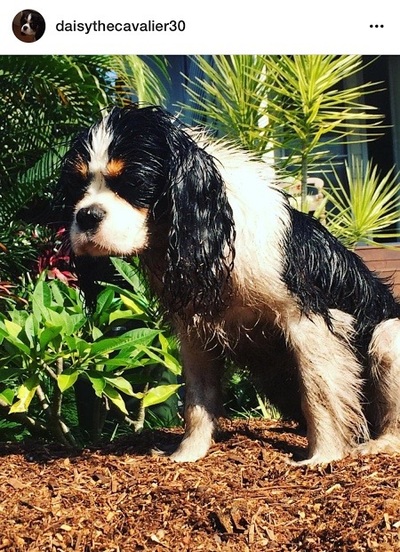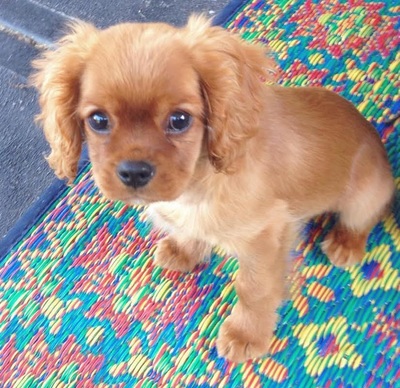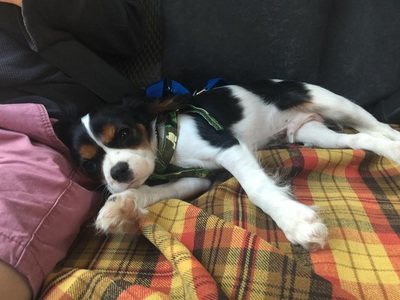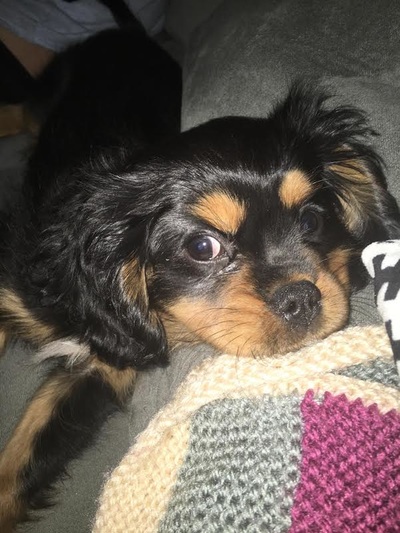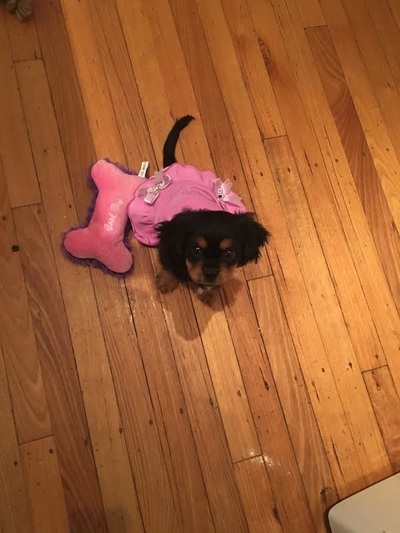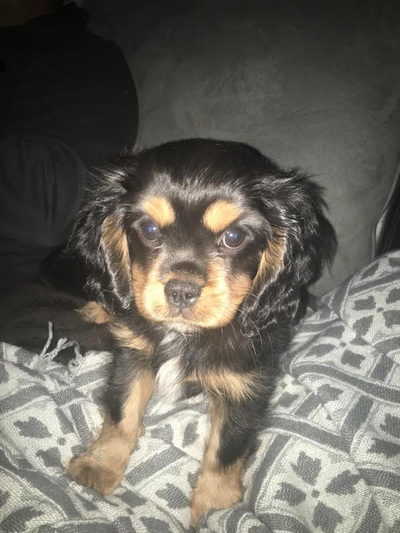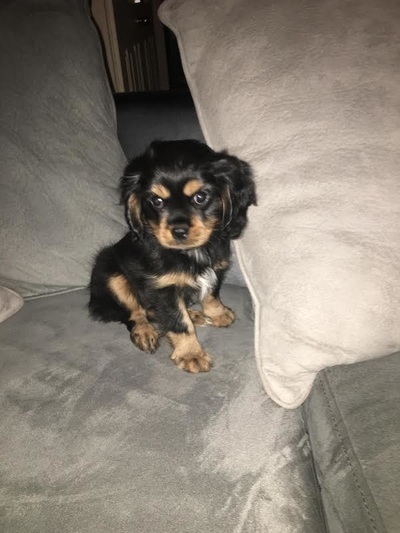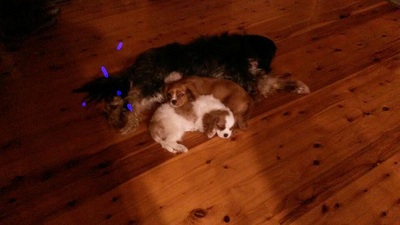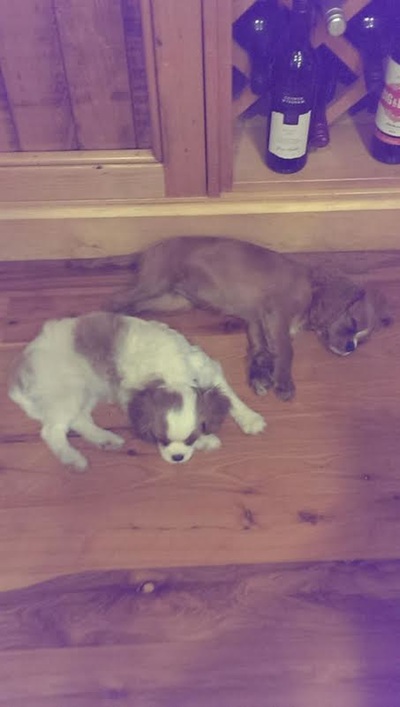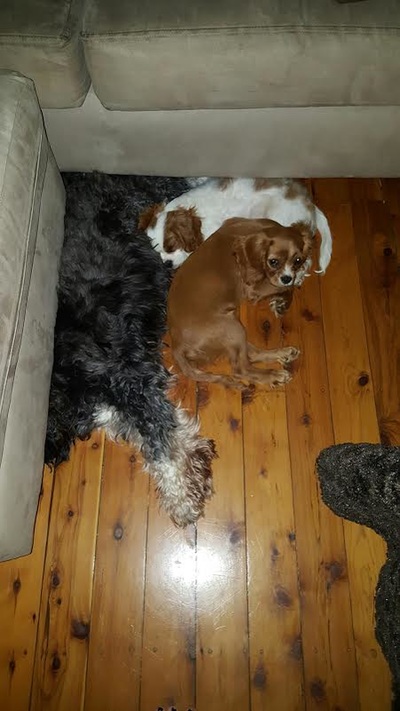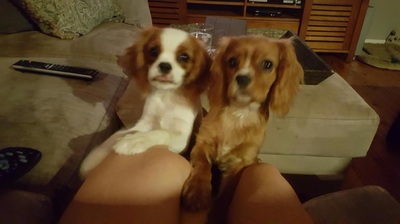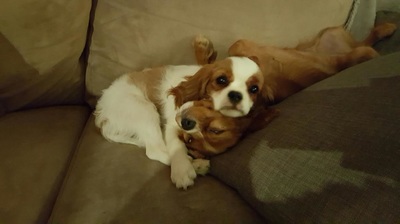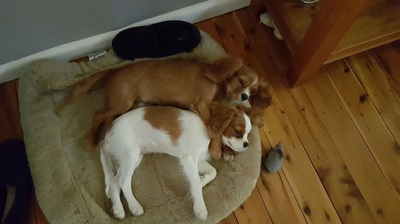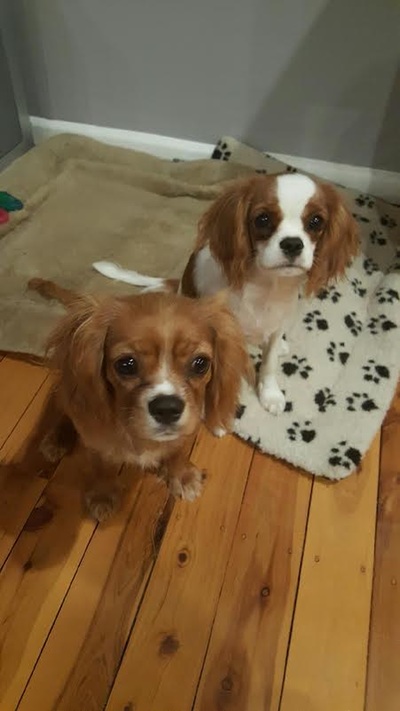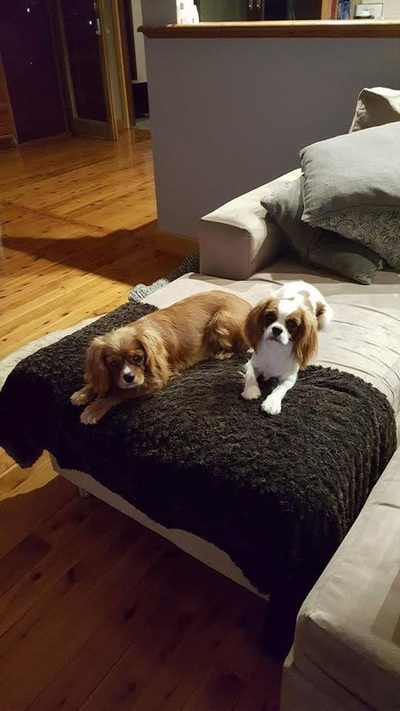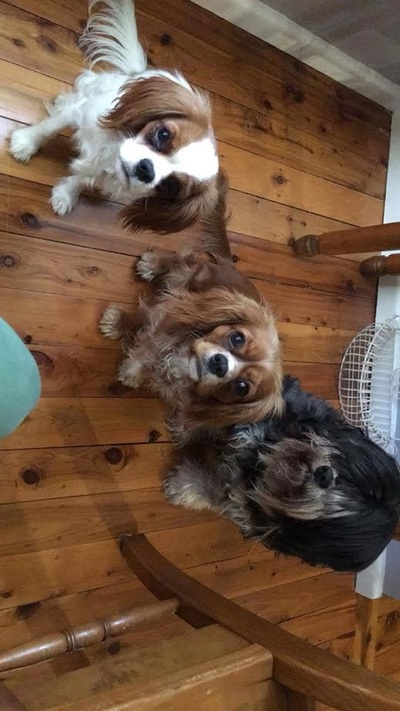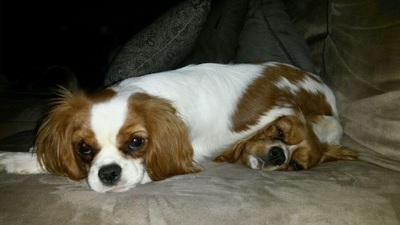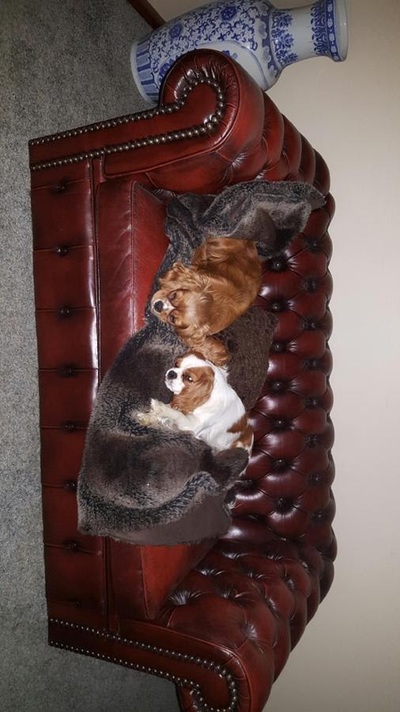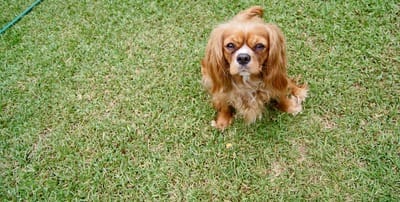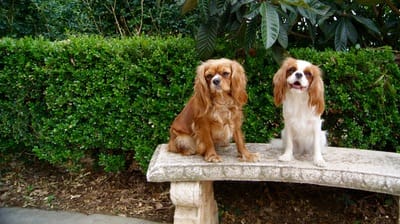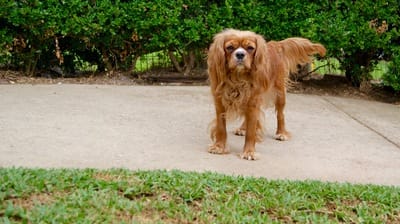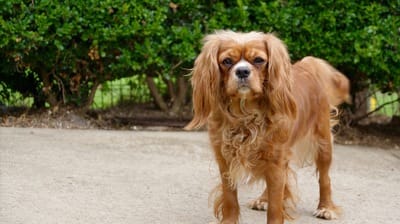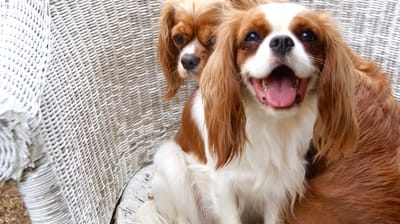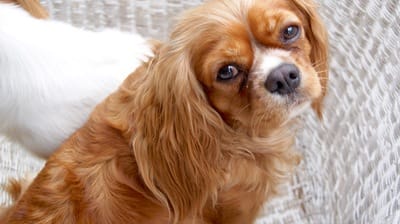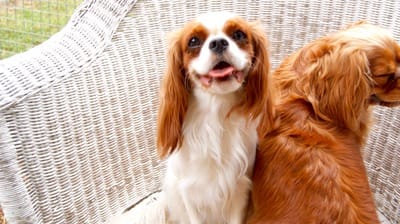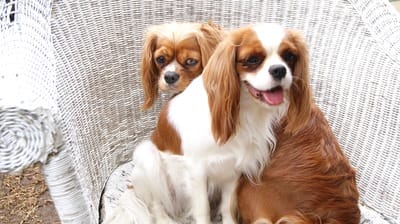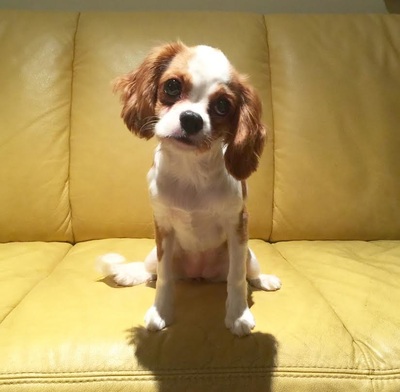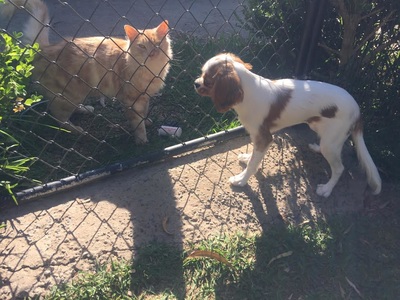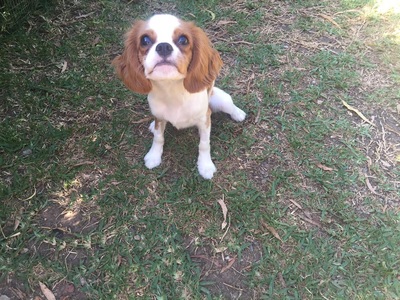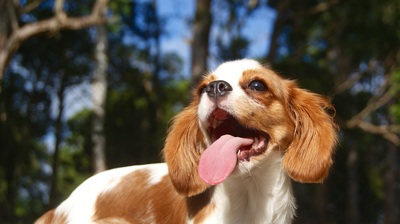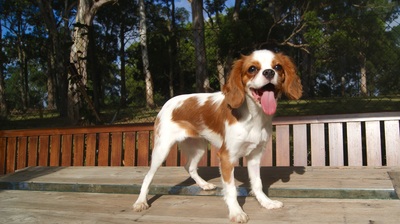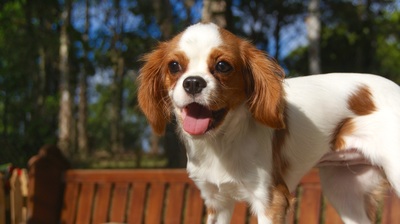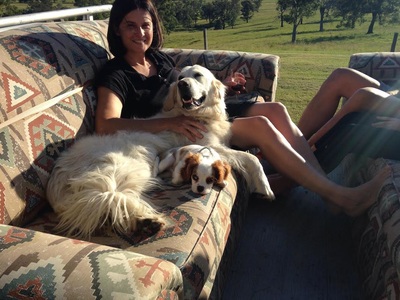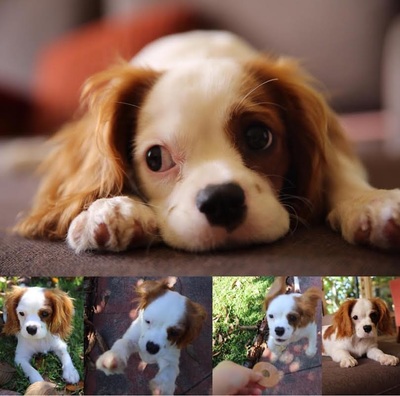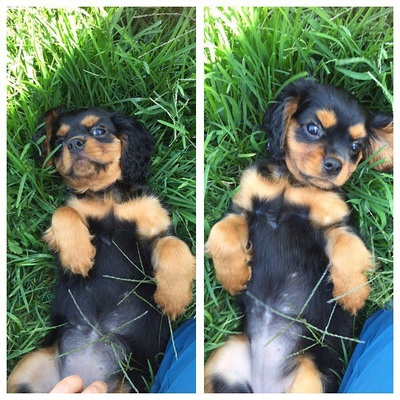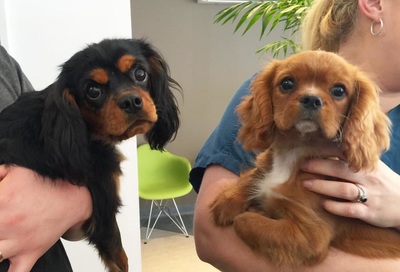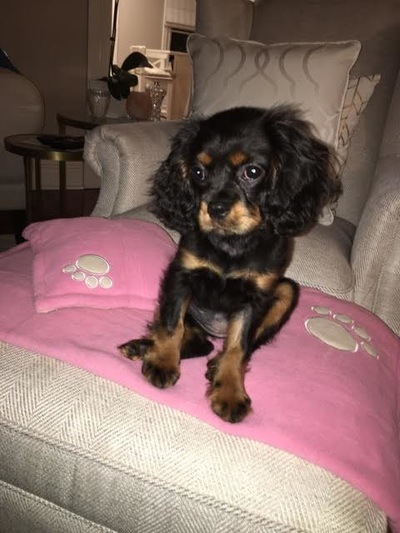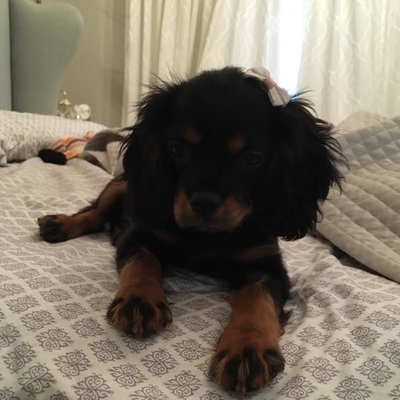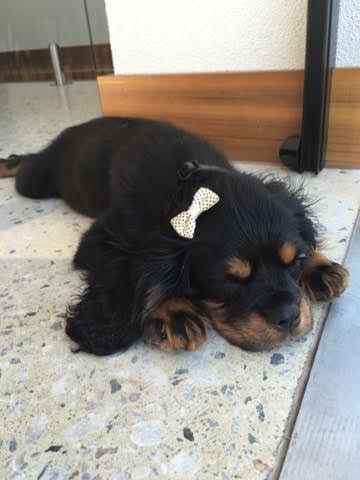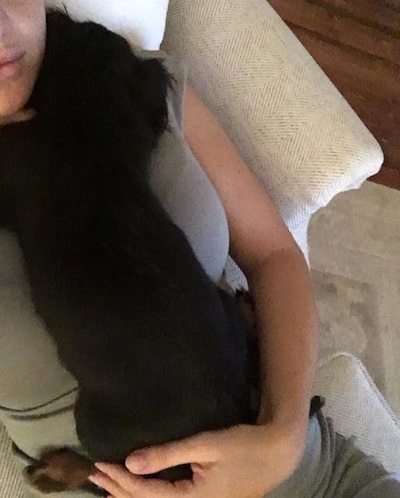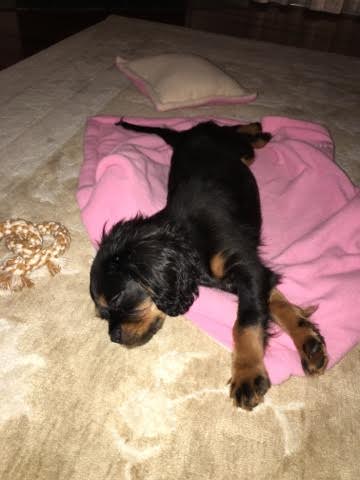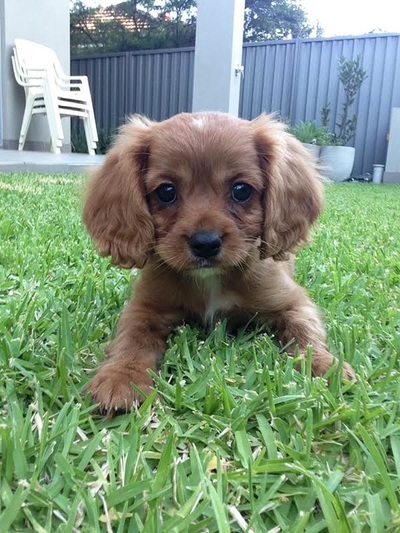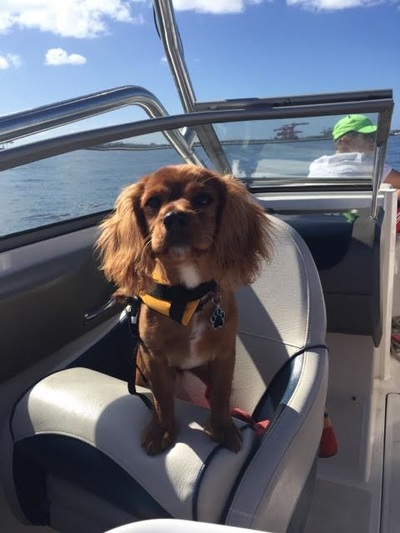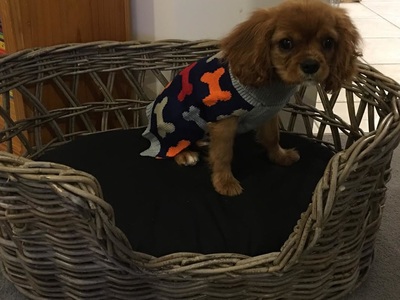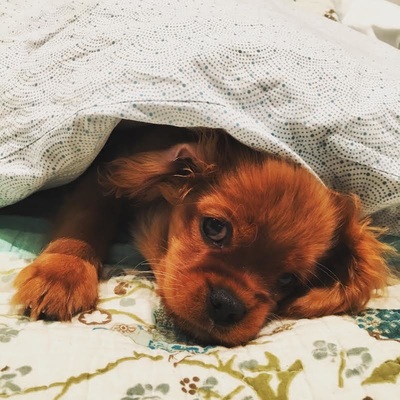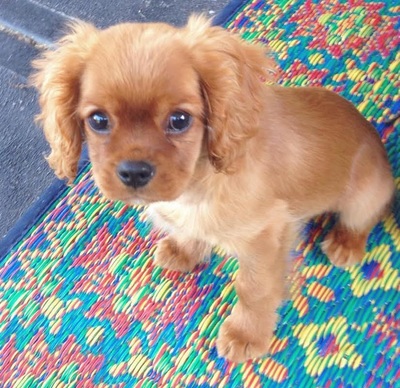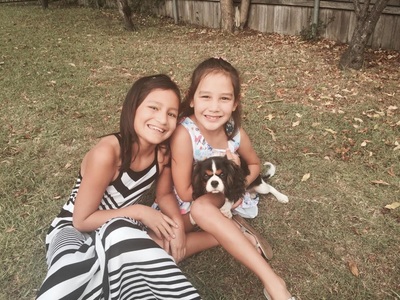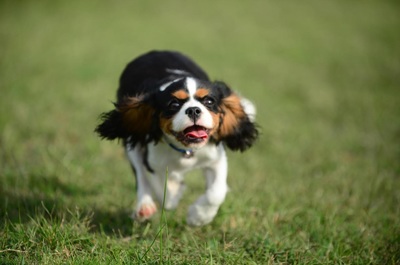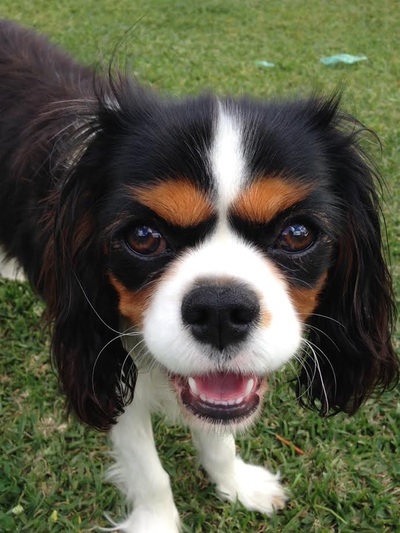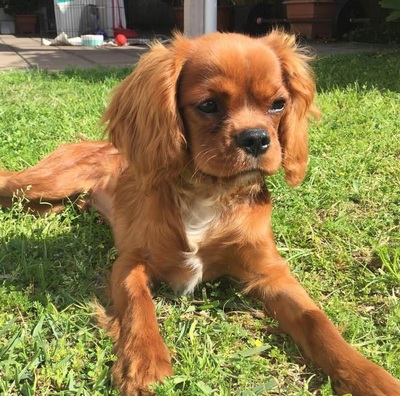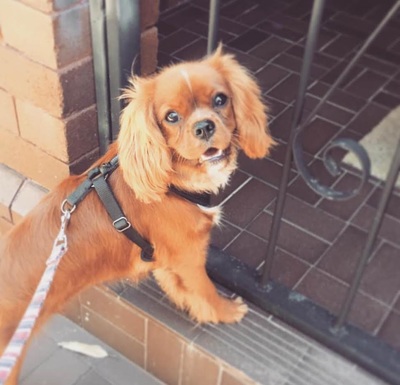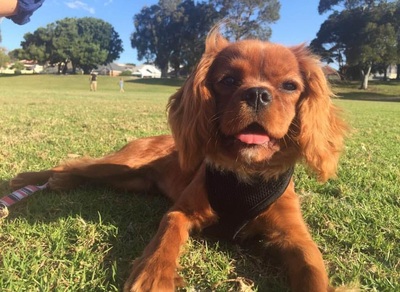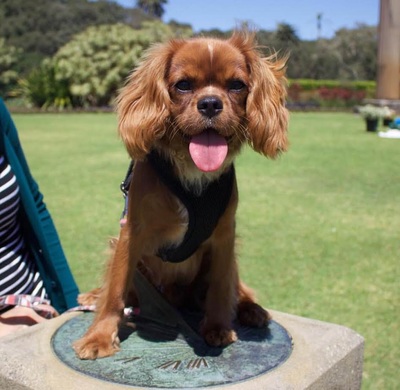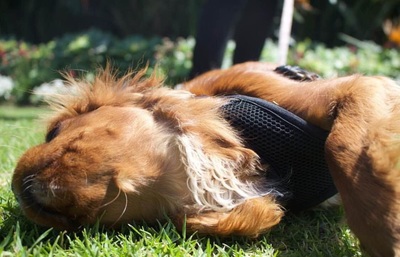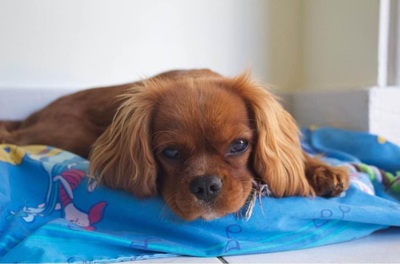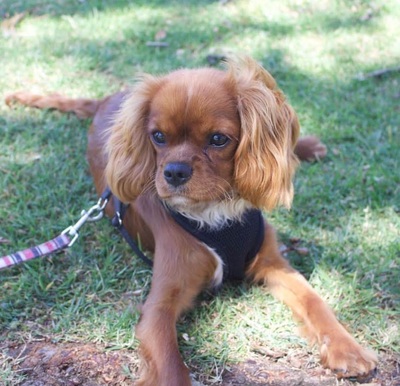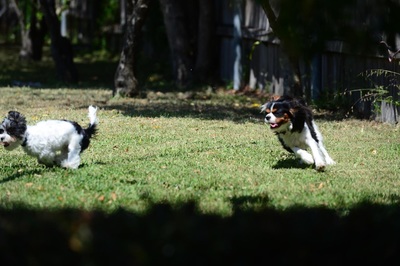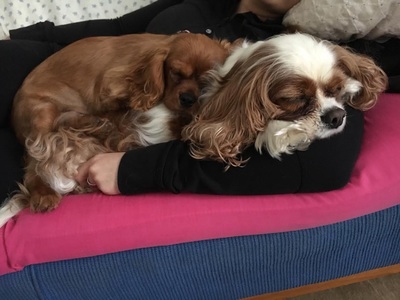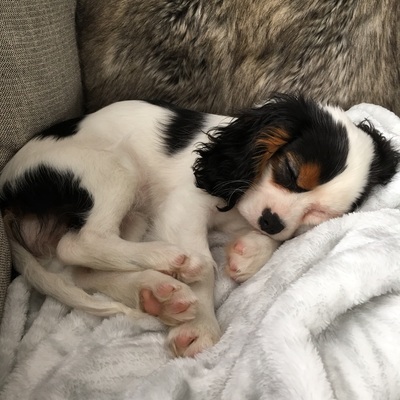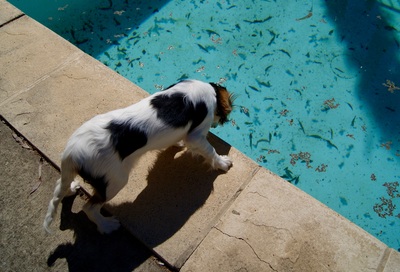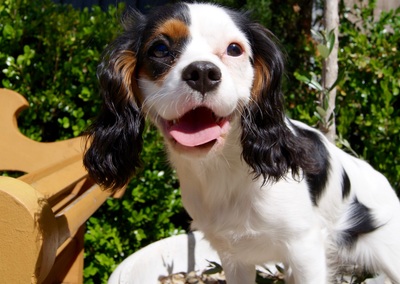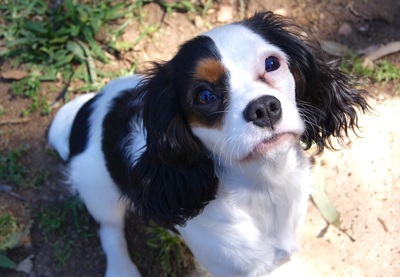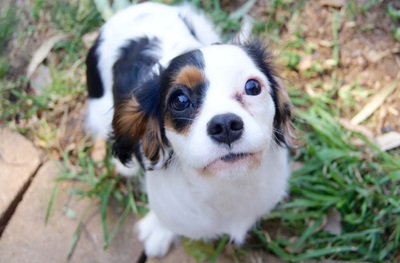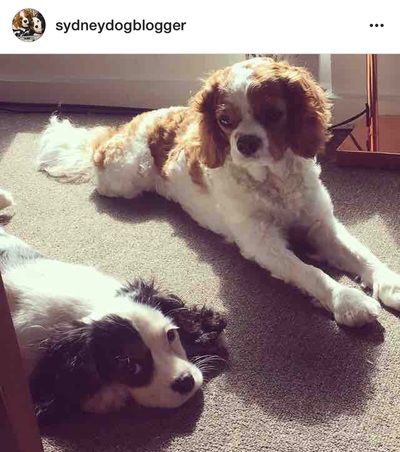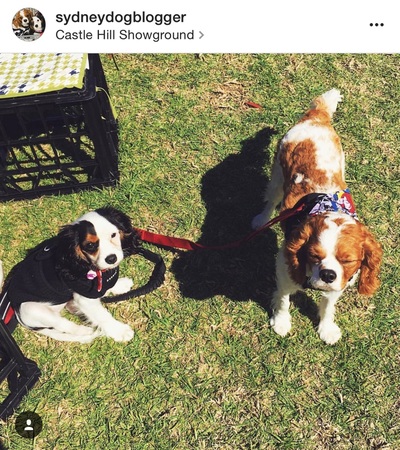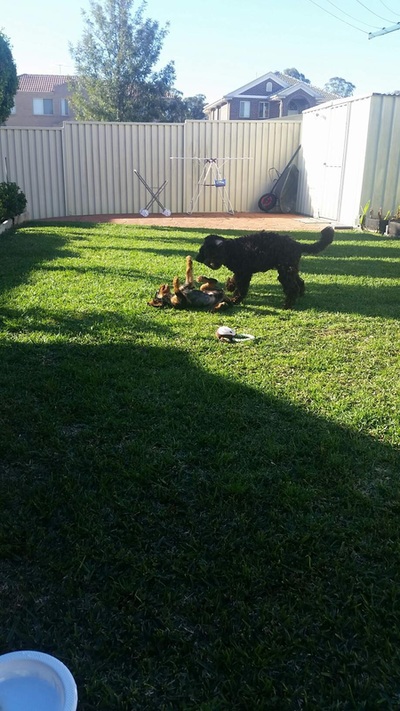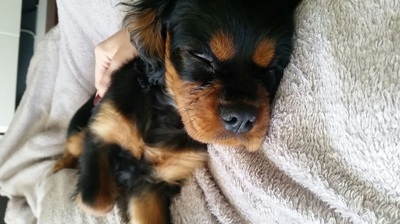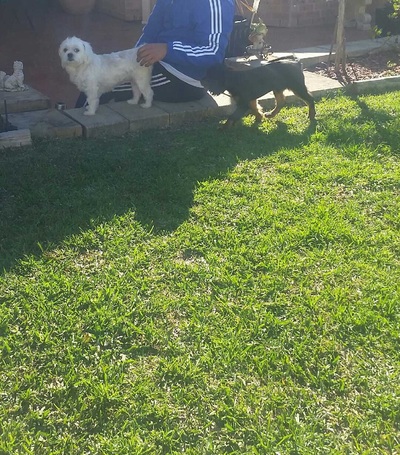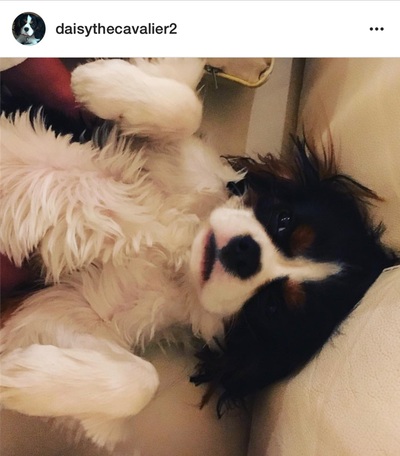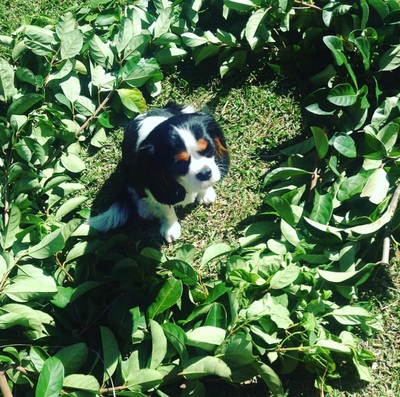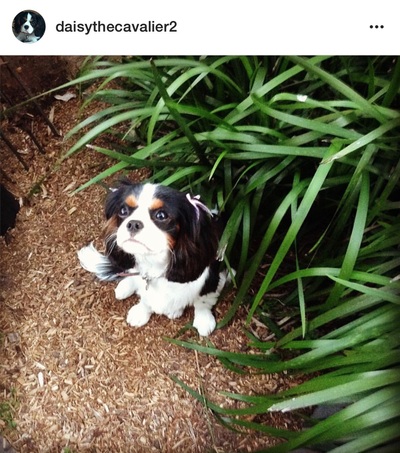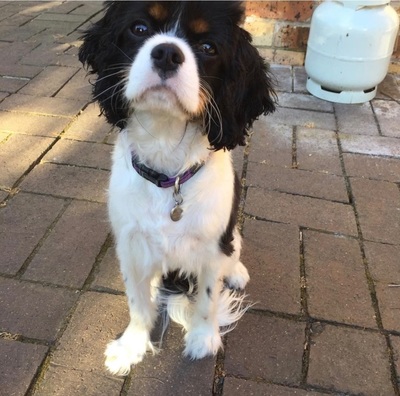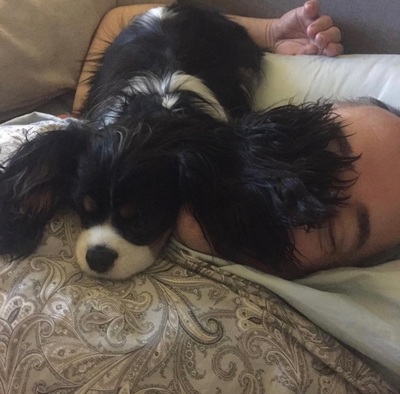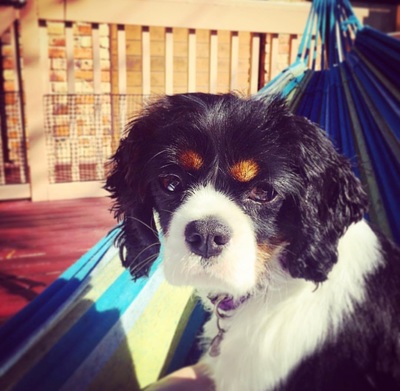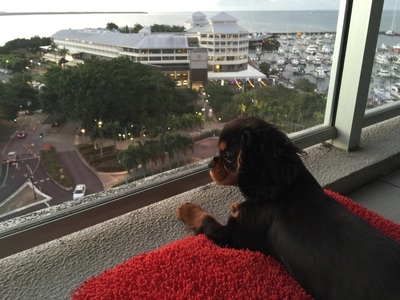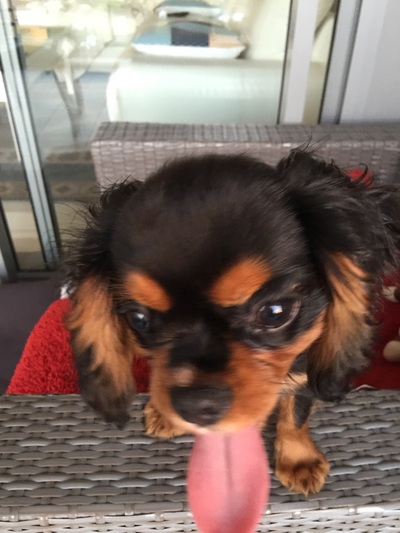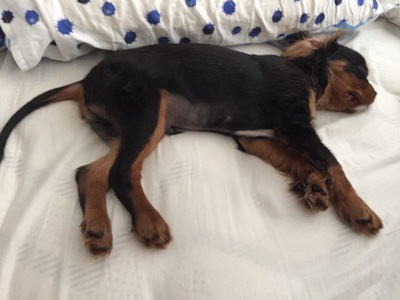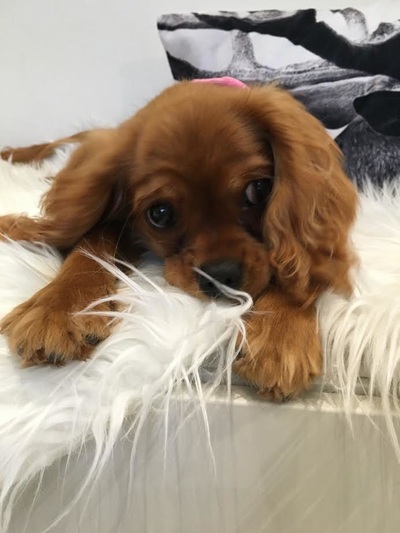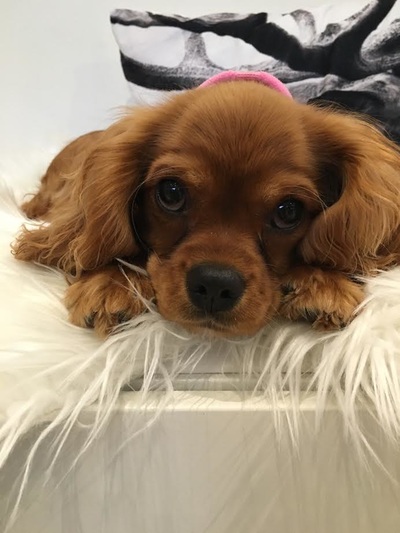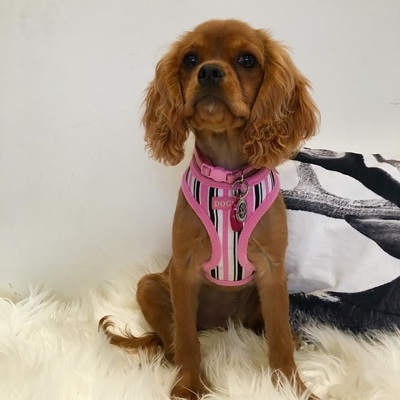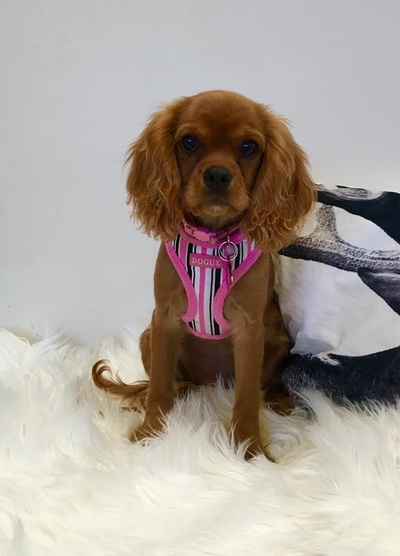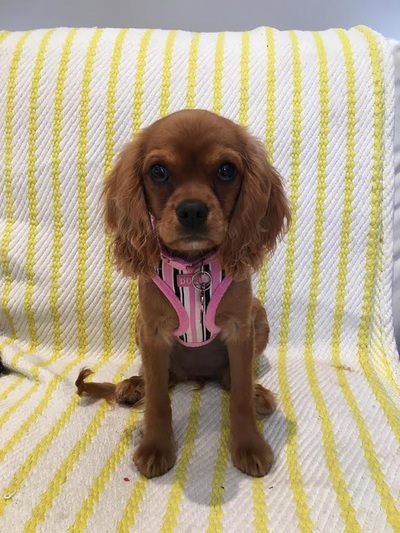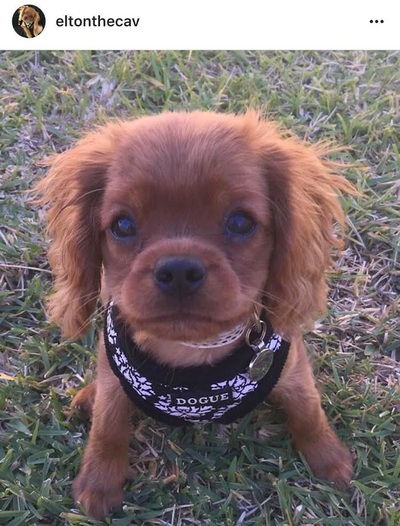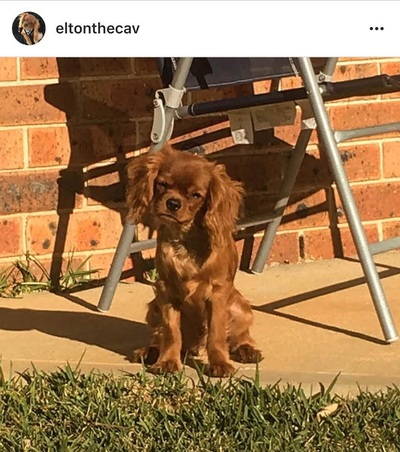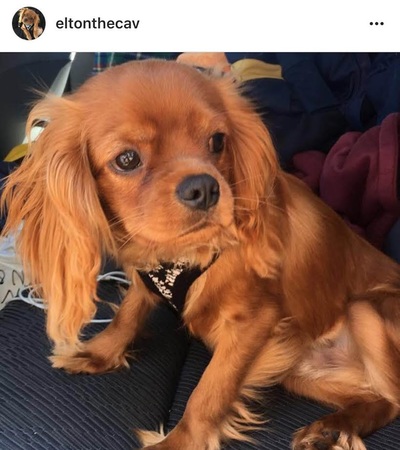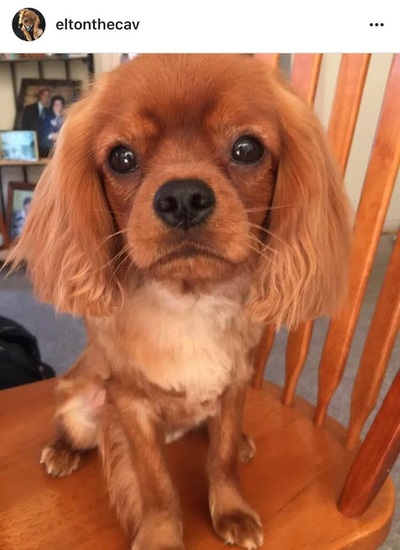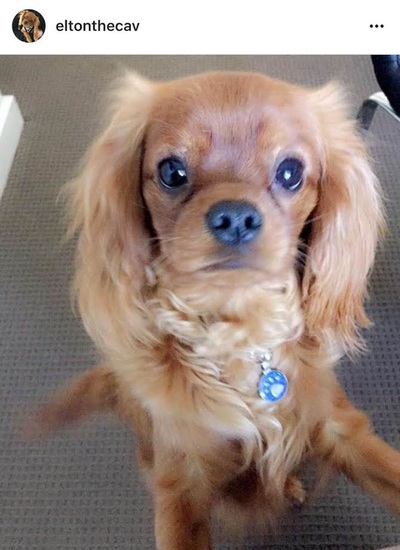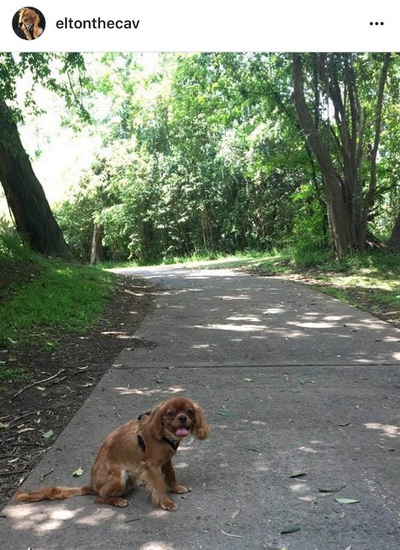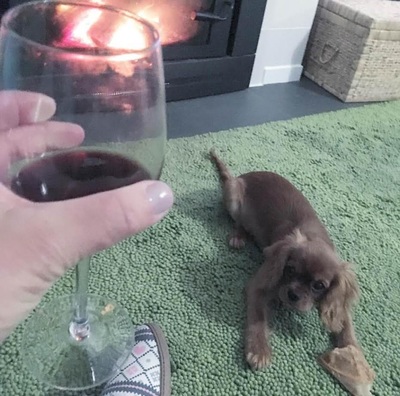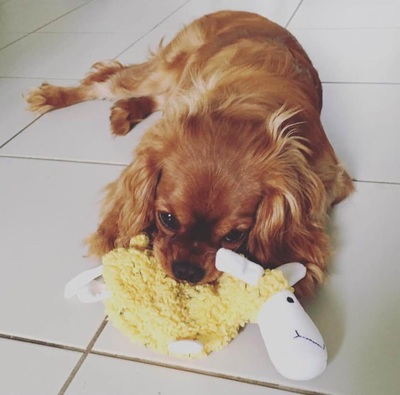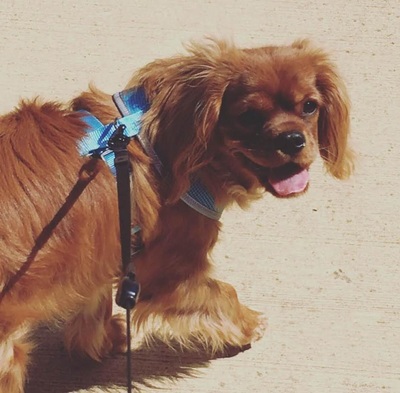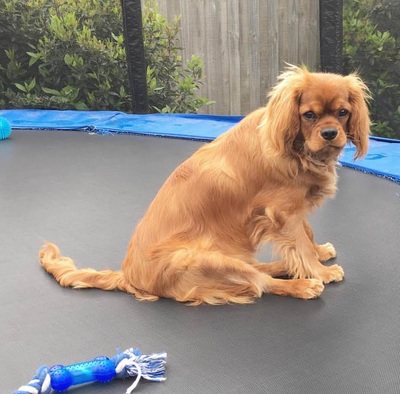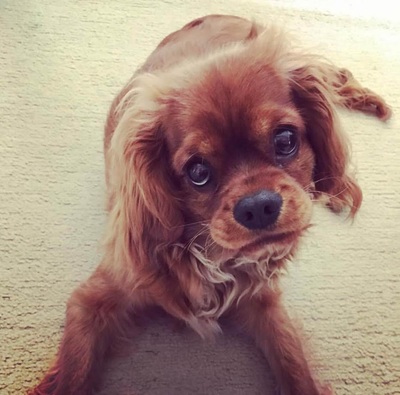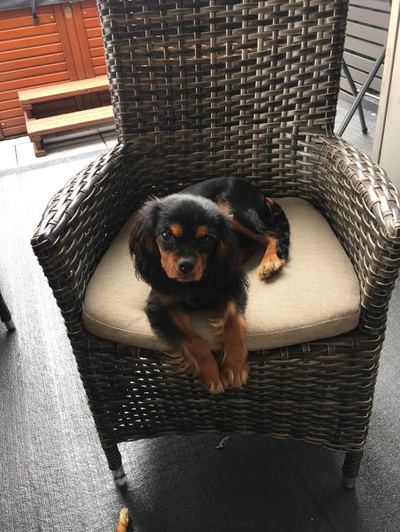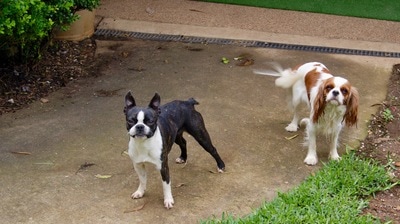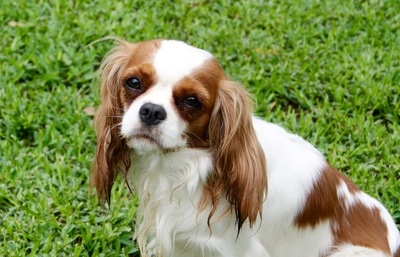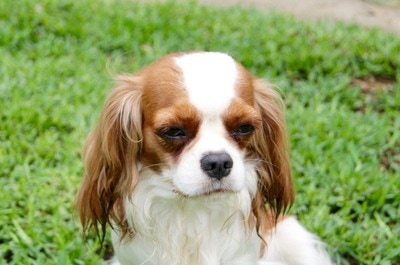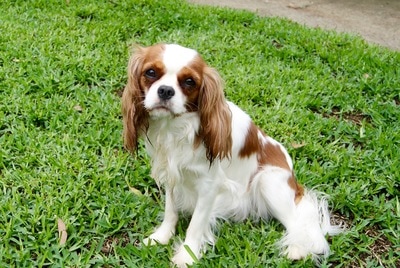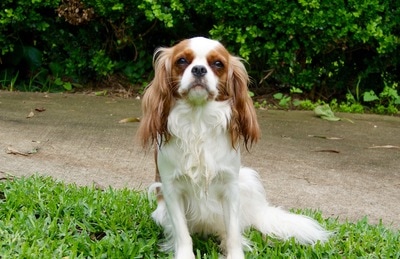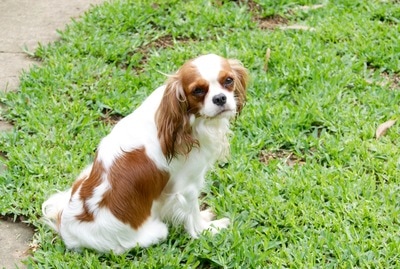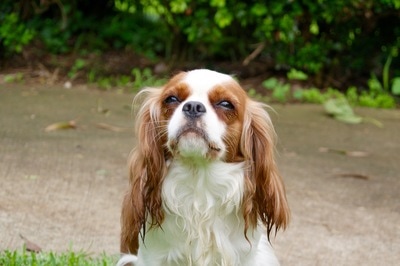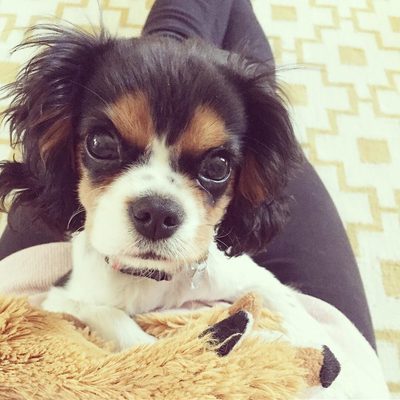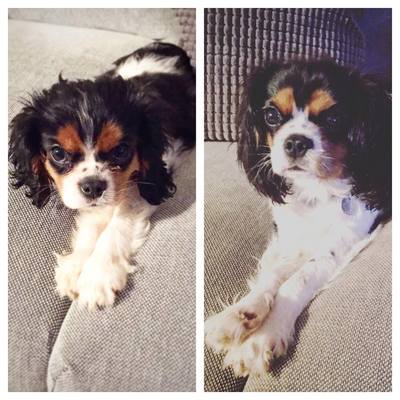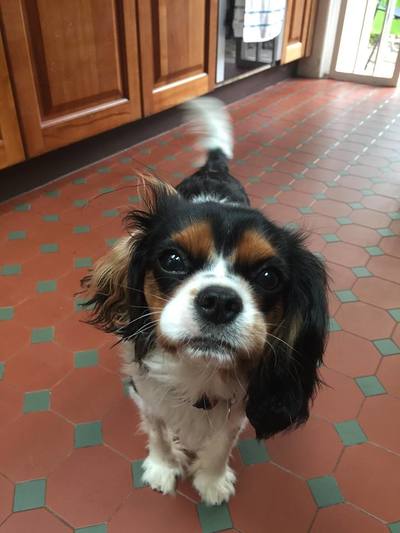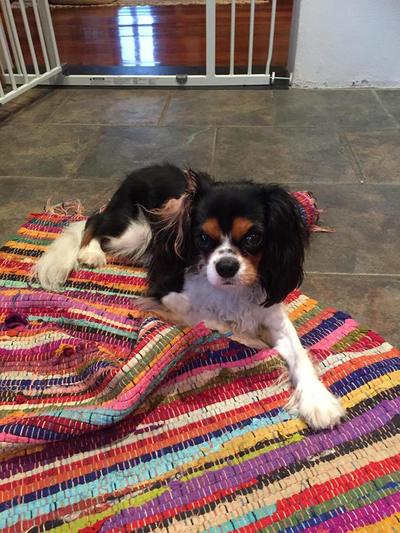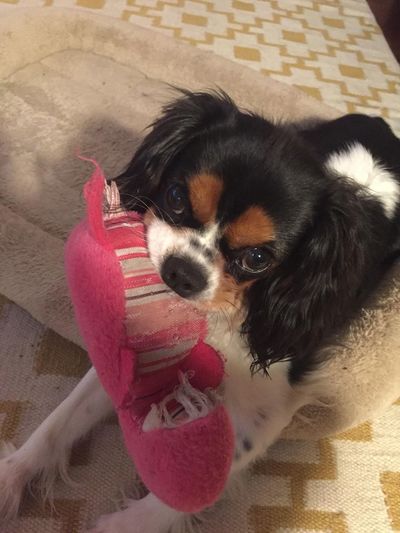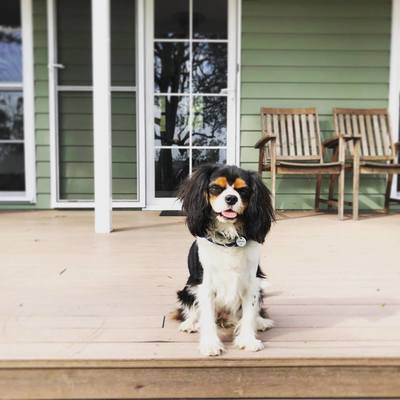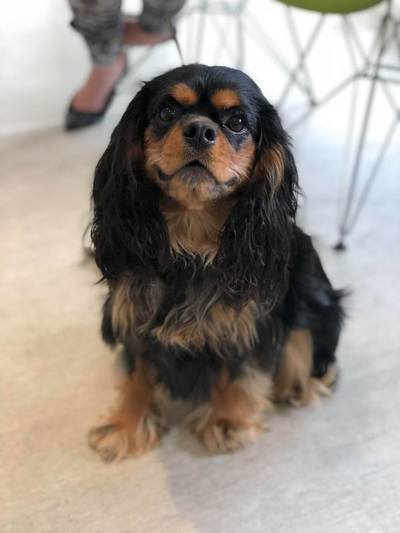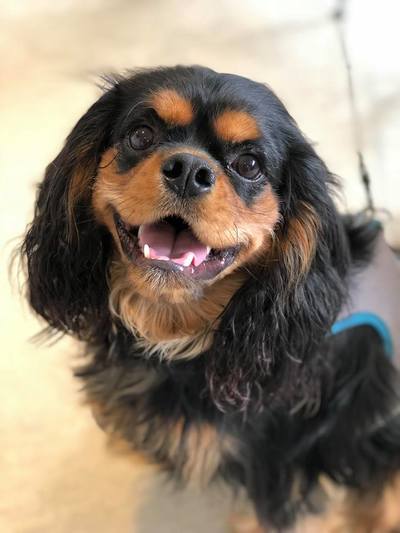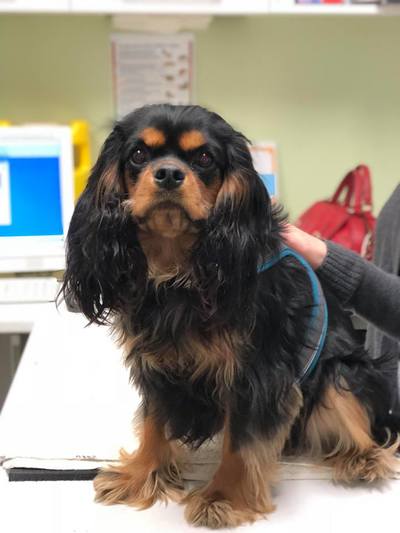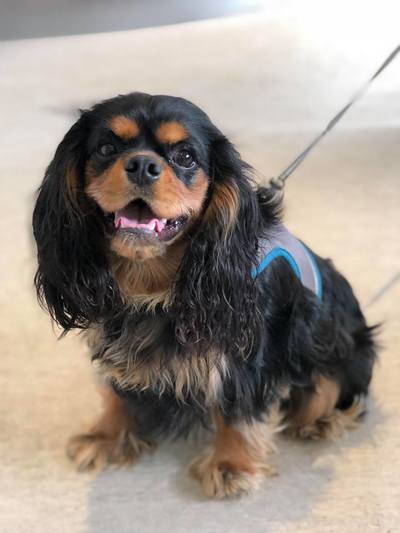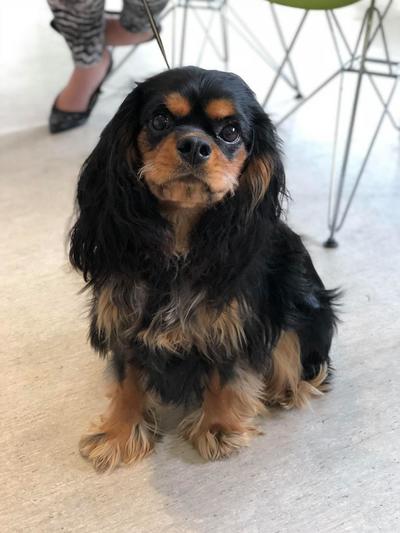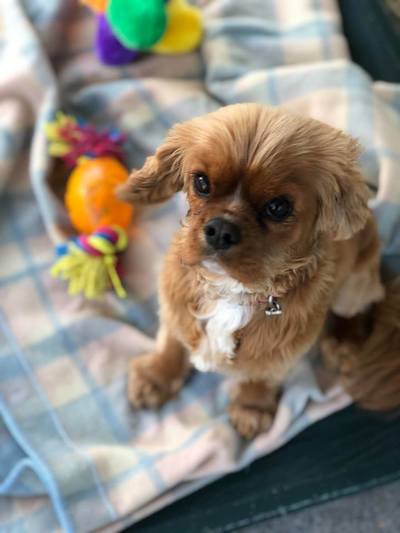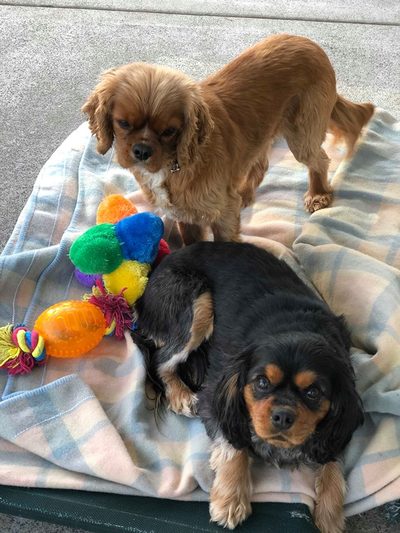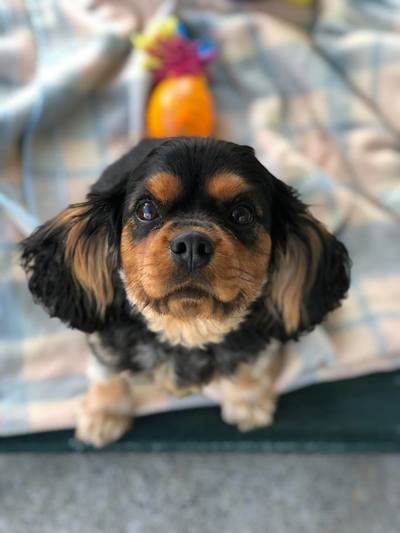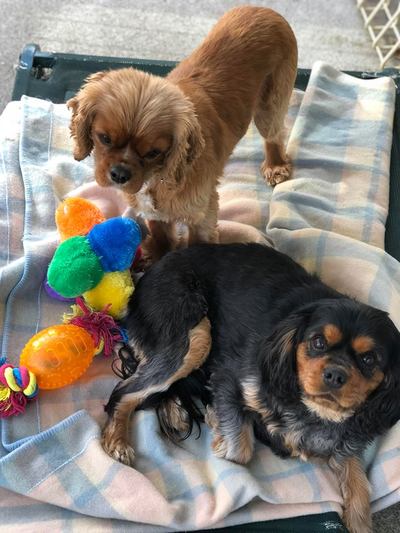Cavalier King Charles Spaniel
See below for photos of our past Cavalier puppies.
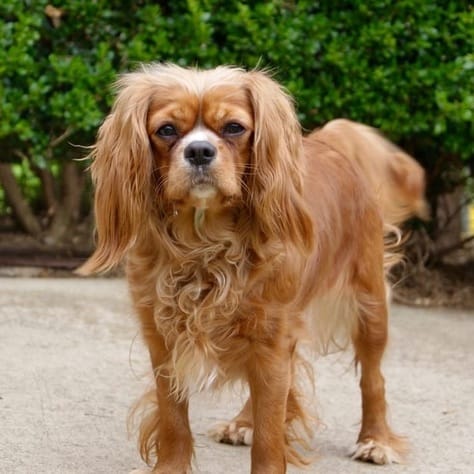 Our Cavalier, Lolly
Our Cavalier, Lolly
Breed: Cavalier King Charles Spaniel
Other names: Cavalier, Cav, Cavy, CKCS
Temperament: friendly, affectionate, loyal and loving
Size: 6- 12kg (weight may vary)
Lifespan: 10 - 12 years
Maintenance: medium
Recommended for: families, children, older adults and great for first time dog owners.
Other names: Cavalier, Cav, Cavy, CKCS
Temperament: friendly, affectionate, loyal and loving
Size: 6- 12kg (weight may vary)
Lifespan: 10 - 12 years
Maintenance: medium
Recommended for: families, children, older adults and great for first time dog owners.
History of the Cavalier King Charles Spaniel
Though a relatively new breed, the origins of the Cavalier date back centuries ago. The breed stemmed from King Charles Spaniels, and both of which earn their name from King Charles II. Paintings with these little dogs featured throughout many Royal portraits. The Pug was bred into their bloodline, creating a rounder head with more protruding eyes, a shorter muzzle, upturned nostrils and a smaller body. These dogs took to the liking of many, but not all - and throughout generations, they maintained the appearance of those smaller dogs with Pug heritage.
At an exclusive dog show in the 1920's, there was a reward offered to those King Charles Spaniels featured with a longer nose. A prize for those dogs which more closely resembled those seen in earlier paintings, and it wasn't until nearly 20 years later that the Cavalier King Charles Spaniel, was recognised as a breed of its own.
Personality, characteristics and temperament
The Cavalier is bred as a companion dog, and makes a great family pet. Ideal for first time dog owners, and a popular choice for many Australians, and families throughout the world. The Cavalier is an easy going and laid back little dog, who is incredibly affectionate and sweet. Their gentle disposition allows them to get along well with many, including young families, older couples and single pet owners. Even for those unfamiliar with dogs, a Cavalier King Charles Spaniel is a good choice.
Devoted and loyal companions, the Cavalier will be happiest when by your side. An adaptable breed, the Cavalier King Charles Spaniel can be as well suited to apartment life as it is to country living. Cavs have a great temperament, and its understandable as to how they earnt such a large following.
Grooming your Cavalier King Charles Spaniel
Grooming a Cavalier is pretty straight forward, a monthly wash with dog shampoo and a weekly brush and dry groom will help to keep your pet in top condition. Over bathing can cause the dogs natural bodily oils to dry out and cause skin irritations, so try not to shampoo them more regularly than once a month. Cavalier King Charles Spaniels possess a lovely and lustrous, silk like coat. It can take some time for the feathering along the ears, legs, and underbelly to develop and reach its full potential. Though Cavaliers do not require clipping, some do choose to have the coat shaved back.
Get your puppy use to their feet being handled, to get them familiar with having their nails trimmed as they grow. It is important to make sure your Cavalier always has clean ears, and that the hair under the ears is nice and dry after a bath. Damp hair under the ears can be a breeding ground for bacteria, and cause ear infections.
Training your Cavalier King Charles Spaniel
Eager and willing to please, early training with the Cavalier will be beneficial. Happiest when by your side, use positive reinforcement in conjunction with treats as training rewards (treats alone can easily allow your Cavalier to become overweight, and cause problems). Socialise your puppy and attend puppy preschool classes to start training young. Easily house trained, consistency is key.
Though a relatively new breed, the origins of the Cavalier date back centuries ago. The breed stemmed from King Charles Spaniels, and both of which earn their name from King Charles II. Paintings with these little dogs featured throughout many Royal portraits. The Pug was bred into their bloodline, creating a rounder head with more protruding eyes, a shorter muzzle, upturned nostrils and a smaller body. These dogs took to the liking of many, but not all - and throughout generations, they maintained the appearance of those smaller dogs with Pug heritage.
At an exclusive dog show in the 1920's, there was a reward offered to those King Charles Spaniels featured with a longer nose. A prize for those dogs which more closely resembled those seen in earlier paintings, and it wasn't until nearly 20 years later that the Cavalier King Charles Spaniel, was recognised as a breed of its own.
Personality, characteristics and temperament
The Cavalier is bred as a companion dog, and makes a great family pet. Ideal for first time dog owners, and a popular choice for many Australians, and families throughout the world. The Cavalier is an easy going and laid back little dog, who is incredibly affectionate and sweet. Their gentle disposition allows them to get along well with many, including young families, older couples and single pet owners. Even for those unfamiliar with dogs, a Cavalier King Charles Spaniel is a good choice.
Devoted and loyal companions, the Cavalier will be happiest when by your side. An adaptable breed, the Cavalier King Charles Spaniel can be as well suited to apartment life as it is to country living. Cavs have a great temperament, and its understandable as to how they earnt such a large following.
Grooming your Cavalier King Charles Spaniel
Grooming a Cavalier is pretty straight forward, a monthly wash with dog shampoo and a weekly brush and dry groom will help to keep your pet in top condition. Over bathing can cause the dogs natural bodily oils to dry out and cause skin irritations, so try not to shampoo them more regularly than once a month. Cavalier King Charles Spaniels possess a lovely and lustrous, silk like coat. It can take some time for the feathering along the ears, legs, and underbelly to develop and reach its full potential. Though Cavaliers do not require clipping, some do choose to have the coat shaved back.
Get your puppy use to their feet being handled, to get them familiar with having their nails trimmed as they grow. It is important to make sure your Cavalier always has clean ears, and that the hair under the ears is nice and dry after a bath. Damp hair under the ears can be a breeding ground for bacteria, and cause ear infections.
Training your Cavalier King Charles Spaniel
Eager and willing to please, early training with the Cavalier will be beneficial. Happiest when by your side, use positive reinforcement in conjunction with treats as training rewards (treats alone can easily allow your Cavalier to become overweight, and cause problems). Socialise your puppy and attend puppy preschool classes to start training young. Easily house trained, consistency is key.
